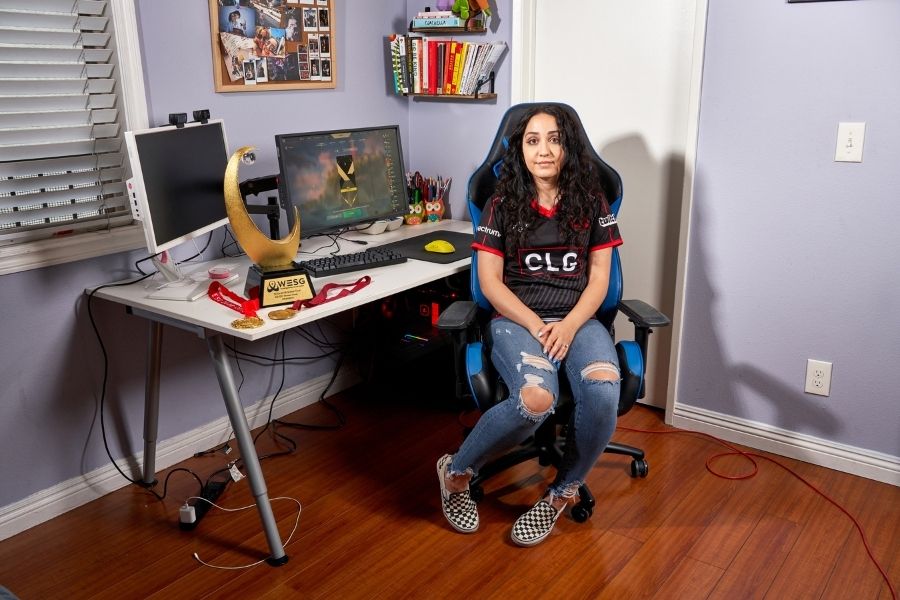
In a big year for video games, these players are shifting the culture
Designers, competitors, streamers, voice actors and labor activists have been working to make gaming more inclusive
 Benita Novshadian, a professional Counter-Strike player, at her home gaming station in Los Angeles, Oct. 8, 2020. “The esports scene for women right now is the biggest it has ever been,” she said. (Michelle Groskopf/The New York Times)
Benita Novshadian, a professional Counter-Strike player, at her home gaming station in Los Angeles, Oct. 8, 2020. “The esports scene for women right now is the biggest it has ever been,” she said. (Michelle Groskopf/The New York Times)
It should come as no surprise that 2020 was a monumental year for the video game industry. While other business sectors saw revenues shrink and storefronts close, gaming companies have profited over these many months when millions of people have been spending more time at home.
Some of those people were always gamers, but the year has also drawn a new crop of players. Streaming platforms like Twitch, previously reserved for competitive gamers and fans, grew to host chess grandmasters and politicians making campaign stops. Sellers on Amazon and other online marketplaces began listing the Nintendo Switch, released in 2017, at jacked-up prices in the early months of the pandemic to match an unexpected surge in interest. And now, demand for the new consoles released by Sony and Microsoft has made them nearly impossible to buy (unless you want to pay a premium).
The year also delivered several blockbuster titles and surprise hits. “Animal Crossing: New Horizons” became a virtual social hub. “Cyberpunk 2077,” long hyped as the game of the decade, arrived with bugs and less flash than anticipated; many players have since demanded refunds from its maker, CD Projekt Red. Meanwhile, the PlayStation hit “The Last of Us Part II,” which centers on queer women (including the game’s main character, Ellie) and features a transgender character, broke sales records for Sony, selling over 4 million copies in its first three days.
But less remarked upon are the gains that individuals — players, designers, voice actors and activists, many of them women — have made in the gaming world.
Increasing Visibility and Accessibility
©2019 New York Times News Service




